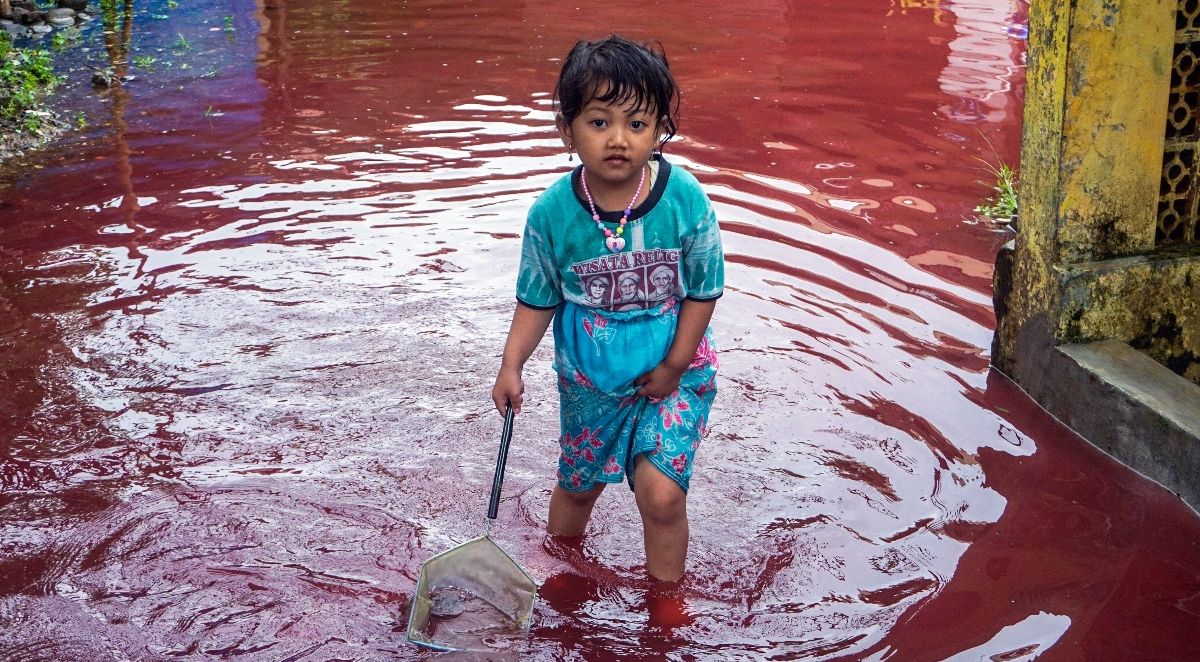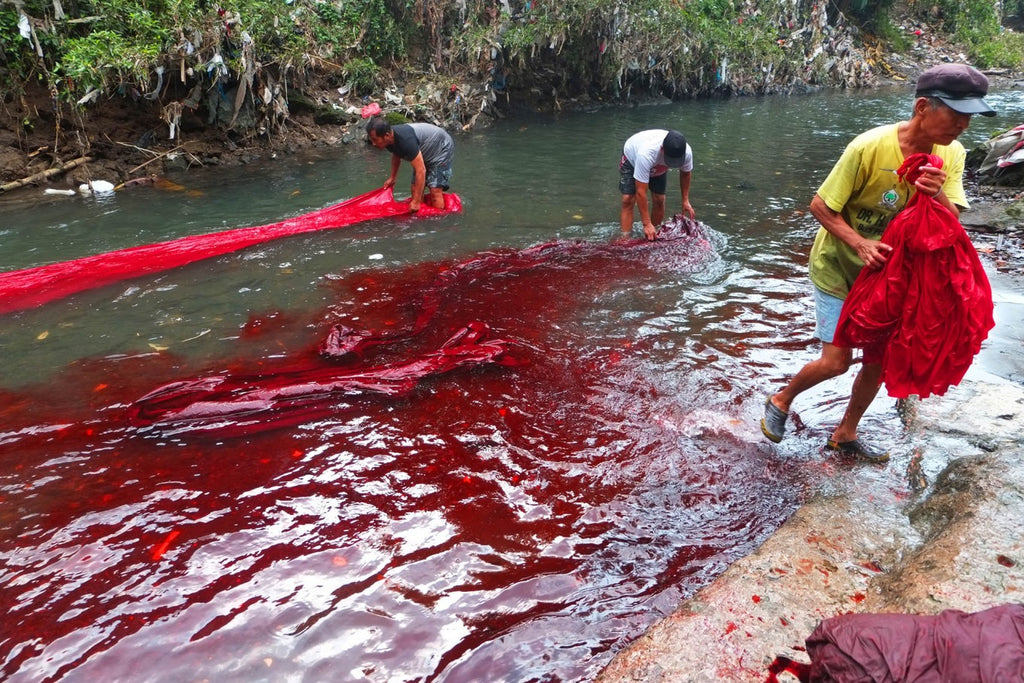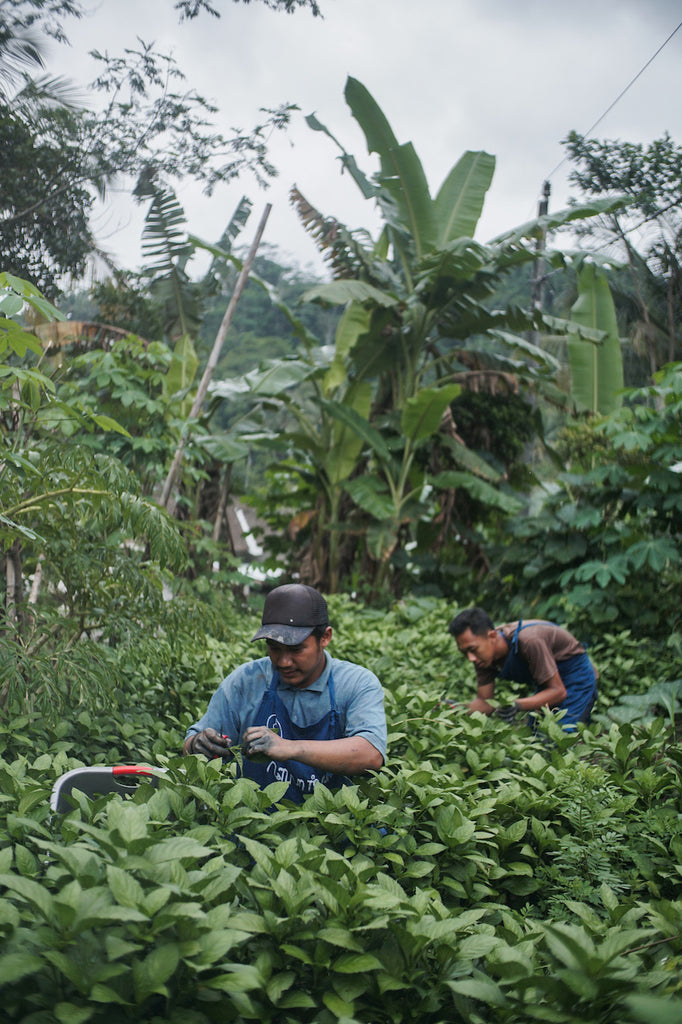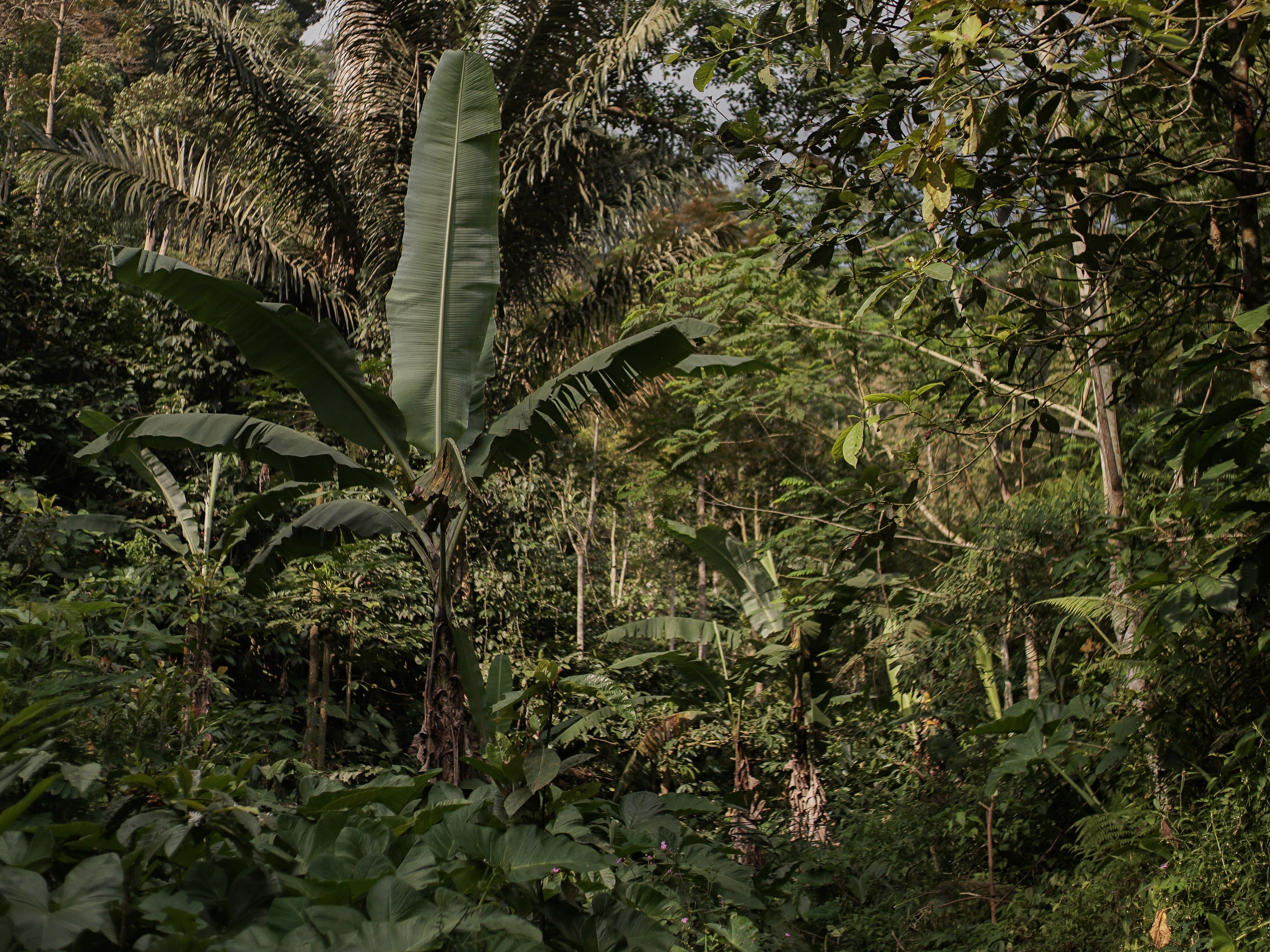
Whenever you hear climate change, your clothes are probably the last thing that come to mind. It seems to be all about oil and coal. About turning off the lights and using your car less.
So it may come as a surprise to you that fashion is responsible for more emissions than all international flights and maritime shipping combined!
And even at the most conservative estimates, fashion still emits as much CO2 as all of Germany, UK and France together. That’s more than 216 million people (and a lot of industry).
And the industry continues to grow fast.
So how come it’s that much? Why should you care? And what can you do about it? These are all questions we’re going to take a closer look at in this article.
So why does fashion have such a huge footprint?
The short answer: Because there is so much going on behind the clothes we wear every day – from farm to you:
Clothes are not just stitched somewhere. They need to be grown, woven and dyed way before they make it to your closet. The easiest way to think about it is three main stages: Raw Materials, Production and Use.

Raw Materials
What’s surprising here is that 38% of all emissions come from raw materials, i.e. the fibres that make up our clothes.
That's over 800 million tons of CO2 or 174 Million cars driven for a whole year.
A big part of that is that nowadays more than half of all clothes are made of polyester – which in essence is woven plastic (and isn’t really all that great for you and our oceans).
The process to turn the small plastic pallets into threads is very energy intensive – as is their production which requires crude oil. And most of the energy for this comes from – you guessed it – coal.

But conventional cotton is not necessarily better: While it is a plant and at least in theory renewable, it’s usually grown in massive monocultures that require lots and lots of pesticides and fertilizers – which negatively affects groundwater, worker’s health and release Nitrous Oxide (N2O), a GHG 310x more potent that CO2.
Production
Once the fibers have been turned into threads, they need to be woven and dyed – which accounts for another 29% of emissions - half of which comes from the energy needed to power the weaving machines and the other half from the chemicals used to dye your clothes.
The reason the dyeing process has such a high carbon balance is that dyes are petrochemicals, made of crude oil. And as they get released into the environment, typically without any filtration, they keep reacting with their surrounding and emitting CO2 in the process.

The part of the lifecycle over which brands have the most control, the finishing, transportation and retail (e.g. keeping the lights and AC on in their retail outlets) accounts for only 10% of all emissions.
Use and End of Life
Which leads us to you and me – the wearers. Our biggest contribution to the whopping 23%: washing and drying our clothes – which requires a lot of energy. And of course the emissions that are generated as the clothes are burned or slowly decay in our landfills.
How we wash our clothes and dispose of them contributes 484 Million tons of CO2 - worth 105 Million cars.
With the amount of clothing in our closets exploding over the last two decades, so has the amount of textile waste. Every second, the equivalent of a garbage truck full of clothes is dumped or burned somewhere. Only 1% so far is being recycled.
How can you and your closet make a difference?
The good news is that there is quite a lot that you can do to limit your own footprint – and hold brands accountable to lower theirs as well (more on that below).
Here are a few simple steps that taken together could save as much as 347 Mio. tons of CO2 every year (equivalent of 75 million cars):
- It all starts with being more conscious about your choices. The good old slogan of Shop Less, Shop well applies here as well. Whenever you want to buy something, ask yourself: Do you really need this? How long will it last? And how was it made? Then go for brands you know take clear measures to create a positive impact – on both the planet and the people behind your clothes.
- The most sustainable clothes are those already in your closet. So take good care of them. Wear them for as long as you can, mend them when they break and finally, do pass them on to family and friends.
- Wash smart: Make sure to wash full loads and – whenever possible – wash at lower temperatures. The energy needed to heat up the water is a major contributor to the climate emissions from caring for your clothes
- Ditch the dryer: Whenever possible, just hang your clothes to dry. It’s better for your clothes and saves a lot of energy. Just let the sun and the wind work their magic. The best part: they’re free!
- Ask your favorite brands tough questions – online and offline. What are they doing to keep their emissions low? What materials are they using? How are their factories powered and what are their plans to further reduce their footprint by 2030? Don’t underestimate your power as a consumer to drive change within the industry.
- Share this blog post with a friend - to get more people to change their behavior and reduce their footprint.
What can the industry do to stick to the 1.5C goal?
With annual emissions of 2.1billion tons (that’s the equivalent of 418 Million cars), fashion is a key industry to mitigate climate change. But it still has a long way to go.
To meet the 1.5C target, fashion will have to cut its emission in half by 2030 – to roughly 1.1 billion tons. If nothing changes, we will end up at around 3 times that.
So what can the industry do?
In a recent study, the consultants of McKinsey Co demonstrated that fashion can cut its emissions in half by using already existing technologies.
But to get there, clever marketing campaigns and empty pledges are no longer enough. Pretty words won’t save the world. Action does.
Renewable Energy
Most importantly, this means switching to cleaner energy sources such as wind and solar instead of coal, oil and gas. The challenge with that is of course that most of textile production still happens in countries where these kind of technologies are not yet readily available. And large investments especially from more affluent countries who bear the main responsibility for climate change will be needed.
Materials
In addition, fashion will have to overcome its addiction to fossil fuels to make and dye its materials – from nylon and polyester to toxic synthetic dyes. Natural materials like cotton and linen are one way to go – but as I mentioned before, they come with their own set of challenges.
In addition to much needed innovations in recycling and turning other waste materials into fibres, working with farmers to reduce the amount of chemicals used and making the shift from monocultures to regenerative practices will be key.
Reducing Overproduction
Currently the industry’s business model is to make as much stuff as cheaply as possible. In fact, brands the world over produce so much that 40% of all clothes actually have to be sold at a discount – to get rid of them and make space for new collections.
Reducing overproduction by a mere 10 percentage points industry wide – for example by means of better forecasting – could 158 million tons of CO2 every year. That’s 34 Million cars taken off the street for one year (in Indonesia, currently only around 20 Million cars are registered).
Going Circular
And finally, the industry will have to find ways to become truly circular. Specifically, this means making sure that we all can wear our clothes longer and then recycle old garments into new ones.
One way to do that is through free repair services as they are already offered by SukkhaCitta, Patagonia and other brands. But also by generally increasing the quality to garment construction and choosing more durable materials.
By creating clothes that last longer and can actually be recycled, another 31 million cars worth of emissions could be saved every year.
What is SukkhaCitta doing to make a difference?
As a brand that works with rural communities, we can see the impact climate change already has firsthand. From failing harvests and long droughts to extreme rainfall that washes the soil away. In our villages, climate change is already very real.

Here are a few of the things we are doing to reduce our footprint and hopefully mitigate some of the effects of climate change on our villages:
- For the last 2 years, we have been growing our own dyes and now also parts of our cotton regeneratively - meaning in ways that restore soil health and actually bind CO2 from the atmosphere. All without artificial pesticides or fertilizers (more on this soon!).
- We upcycle 100% of our offcuts into our #ReMadeRight products, zero plastic packaging and paper tags. In total, we have saved +25 tons of CO2 (and avoided +10,000 polyplastic bags) this way.
- We exclusively use natural dyes that we either grow ourselves or are upcycled from agricultural waste. Natural dyes are not only free from fossil fuels. They require a lot less energy to process and are a much safer alternative for our Ibus and their environment.
- We offer redye and free repair services to encourage you to keep wearing our clothes for as long as possible.
- We actively regenerate and reforest broken eco-systems in Sumatera and Timor - through our Every Purchase Plants One Tree mechanisms and exciting projects of our new foundation. It's something we're truly passionate about and plan to do a lot more of in the future :)
And we're working on something even bigger that unfortunately I cannot share just yet. But if you follow our Instagram, you will be among the first to know ;)
We all can take action
Climate change is a difficult topic, an overwhelming one. But we all have the power to make a difference.
Because every day we have a choice. The choice what to eat, what to wear, how to travel to work – but also to ask questions, to press for more responsibility from our politicians and favorite brands alike.
That's why I'd like to leave you with these words of Mary Annaise Heglar:
"We might be living in a horror movie right now, but we are the ones writing the script. And we’re the ones who will decide how this movie will end."




